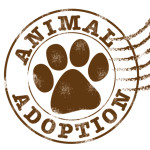
Fact File
The red squirrel is found in all types of coniferous and broadleaf woodlands.
The squirrel makes a drey (nest) out of twigs in a branch-fork, forming a domed structure about 25 to 30 cm in diameter.
The red squirrel eats mostly the seeds of trees, neatly stripping conifer cones to get at the seeds within.
The active period for the red squirrel is in the morning and in the late afternoon and evening.
European Red Squirrel
Sciurus vulgaris
Threats: The main threat to red squirrel survival is the presence of the grey squirrel (Sciurus carolinensis). These were imported from North America in the 1870’s. Grey squirrels out-compete the red’s for food and habitat, and eventually displacing them from the area altogether. Grey squirrels carry a disease called the squirrel pox virus (SQPV) which is fatal to red squirrels.
Conservation: The Wildlife Protection Foundation our very own charity here at South Lakes Wild Animal Park are hugely involved with the South Lakes Red Squirrel Group. Not only are we supporting the group financially, but SLWAP staff are helping to monitor squirrel populations in the area and also help to control the greys. Once the grey population is under control, we can look to set up a captive breed-release program so we can get red squirrels back to the South Lakes area.

